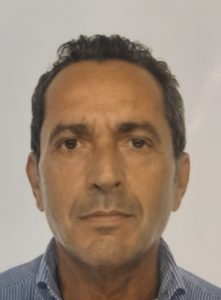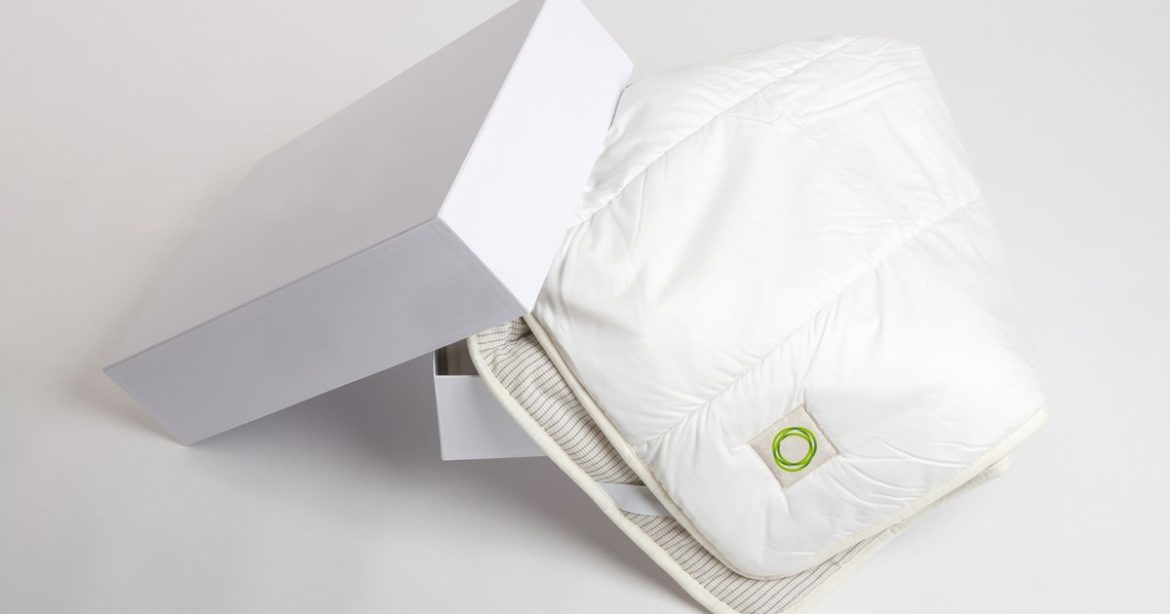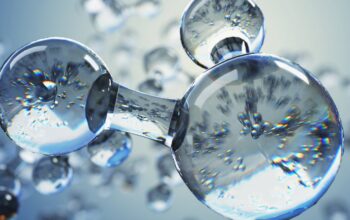
Dr Rossi Alessadro Lorusso, PhD
Keywords: chronic low back pain, placebo-controlled, randomised clinical trial, natural minerals, siliconised fibre, nanotechnology, silica, anti-ageing therapy
Annotation:
Chronic lumbar pain is one of the most common symptoms with which people seek medical attention. Physiotherapy plays an important role in the comprehensive treatment of chronic lumbar pain. One of the components of physiotherapeutic care is the use of nanotechnological mattress pad ‘IFIBR’, made with siliconised fibre in combination with a set of natural minerals using cotton fibre.
Chronic lumbosacral pain syndrome is characterised by painful sensations in the lumbar region, which can be caused by a variety of reasons including trauma, stress, poor posture, and diseases of the spine or internal organs.
This condition is currently receiving particularly much attention in the specialised literature. The relevance of the problem is due not only to medical, but also to social factors. It is known that in 10-20% of patients of working age, acute back pain is transformed into chronic pain. This group of patients is characterised by unfavourable prognosis for recovery, and it accounts for up to 80% of all health care costs for the treatment of back pain. It is generally accepted that chronic pain is pain that persists beyond the normal healing period. Attempts to identify risk factors for the development of chronic pain and disability have been and are being made at a wide variety of clinical or experimental levels. Medical, ergonomic, psychosocial, and socio-demographic factors of chronic disability associated with lumbosacral pain have been identified. These include: irradiation of pain to the leg combined with a positive Laseg’s symptom; previous episodes of pain in the lumbar region that required seeking medical help; psychosocial aspects of work, especially the patient’s perceptions of the difficulty of the job and his or her own ability to cope with it; the patient’s belief that low back pain is related to working conditions; negative opinions about the prognosis of the disease; and the desire for financial compensation. Gender, age, ethnicity, level of education are not associated with chronic disability due to lumbosacral pain.
According to WHO, 80-100% of adults suffer from low back pain. At the same time, managers and drivers complain of pain no less often than labourers or loaders. The fact is that sitting increases the pressure between the intervertebral discs by 400%. In comparison, when moving from a horizontal to a vertical position, the pressure increases only by 200%.
When sitting, the excess pressure between the vertebrae deforms the cartilage of the intervertebral discs. Cartilage layers lose elasticity and cease to cushion the back when walking. This causes the vertebrae in the lumbosacral spine to settle and shift. The displacement of the vertebrae disrupts the normal blood supply to the lumbar region, further accelerating the destruction of cartilage. As the spine ceases to be the support of the back, the burden of maintaining the body position falls entirely on the lumbar muscles. Overloaded muscles cramp, provoking pain characteristic of osteochondrosis. Sometimes when the vertebrae are displaced, the diameter of the intervertebral foramen through which the spinal nerve roots pass is reduced. Because of this, the nerves compressed by the vertebrae become inflamed, and sciatica occurs.
A serious obstacle in approaching the problem of pathophysiology of lumbosacral localised pain is the impossibility in most cases to accurately identify the source of pain impulsion. This is partly due to the complexity of the structure and functioning of the structures of the lumbosacral region, including bones, joints, ligaments, adipose tissue, several layers of muscles, peripheral nerves, nerve roots, sensory and autonomic ganglia, and the spinal cord. Each of these structures responds in a unique way to injury by releasing biochemically and immunologically active mediators that stimulate sensitive receptors. This, in turn, triggers very complex and not yet fully understood neurophysiological mechanisms of pain sensation formation. The ideas about the interaction between peripheral stimuli, reflex mechanisms at the level of the spinal cord, central systems modulating pain, and the relationship between pain sensation and emotional response are only at the threshold of understanding.
It is now generally accepted that the source of pain may be an anatomical structure innervated by unmyelinated fibres or containing substance P (or similar peptides). The intervertebral disc has long been considered indifferent to the generation of pain impulses because no nerve endings have been found in it. More detailed anatomical and histochemical studies have shown the presence of fine nerve endings in the outer third of the fibrous ring. The posterolateral and posterior part of the fibrous ring, as well as the posterior longitudinal ligament, ventral part of the dura mater, are innervated by the sinuvertebral nerve. The sinuvertebral nerve (or Luschka’s nerve) innervates the tissues 1-2 segments above or below its exit. This feature is often attributed to the difficulty in clearly localising back pain
Chronic lumbar pain can have a variety of causes, such as osteochondrosis of the spine, intervertebral hernia, scoliosis, spondylosis, muscle strain, flat feet and others. Determining the cause of pain is a key step in prescribing the right treatment and preventing its further development.
Often chronic lumbar pain can be caused by prolonged exposure to uncomfortable positions, lack of physical activity, being overweight, and stressful situations, which ultimately leads to overloading of the back muscles and pain.
Physiotherapy treatments
Physiotherapy plays an important role in the comprehensive treatment of chronic lumbar pain. Physiotherapeutic methods are aimed at strengthening the back muscles, improving the mobility of the spine, relieving pain and improving the general condition of the patient.
One of the most effective physiotherapy methods in treating chronic lumbar pain is back massage. Massage helps relax muscles, improves blood circulation in the lumbar region, relieves pain and promotes general relaxation of the body.
Another important method of physiotherapy is therapeutic gymnastics. Exercises are aimed at strengthening the back muscles, improving the flexibility of the spine, correcting posture, as well as improving endurance and general physical condition.
In general, physiotherapeutic methods:
– Normalise blood circulation in the affected area, so that the damaged tissues receive more of the necessary nutrients;
– Help to warm up and relax spasmed muscles;
– Reduce swelling and inflammation;
– Improve microcirculation in tissues and speed up the healing process of injuries and other damage.
Currently, the use of innovative development – nanotechnological mattress pad ‘IFIBR model 2’ in the complex therapy of chronic lumbar pain is gaining popularity both among doctors and ordinary people experiencing discomfort in the lumbar region.
Of course, the use of innovative mattress pad ‘IFIBR model 2’ is not appropriate if the spine or lumbar region requires strong fixation due to severe pathologies or injuries. However, in case of muscle sprains and/or hypothermia, inflammation, rheumatism, as well as kidney disease, colitis, overweight, etc., their effect on the painful area will help to significantly alleviate the condition and restore the ability to move freely without pain.
The textile fabric created by Ipoh GmbH, Austria, using siliconised fibres and cotton in combination with a whole group of natural minerals, is an outstanding example of synergy between modern technology and traditional materials. The set of natural minerals used includes, among others: native silver with a touch of gold; the family of platinum metals (platinum and its permanent companions: iridium, osmium, palladium, ruthenium, radium); beryl and its varieties – aquamarine and emerald; corundum with an admixture of chromium-ruby, with an admixture of iron and titanium – sapphire; halogens (bromine, fluorine, chromium, iodine); chalcogenes (sulphur, selenium); alkali (lithium, sodium, potassium) and alkaline-earth metals (magnesium, calcium, barium, beryllium); iron family.
The manufacturing process emphasises the combination of strength and softness to achieve a unique tactile sensation. Siliconised fibres, with their high resistance to wear and moisture, give the fabric durability, while natural cotton gives it the breathability and comfort needed for everyday use.
It is used in a wide range of applications, from clothing to textile decoration. Its use in the interior creates an atmosphere of cosiness and harmony thanks to its noble lustre and elegant texture. It is also worth noting that this type of fabric lends itself well to dyeing, which allows you to create bright and attractive products that can meet the demands of the most demanding consumers.
In addition, siliconised fibres give the fabric additional properties such as antistaticity and ease of care, which becomes an important aspect in the modern world, where every minute is precious. Therefore, textile fabrics based on siliconised fibres and cotton are the ideal solution for both domestic and fashion applications.
Textile nanotechnology using FIBRILLIUM in the treatment of chronic lumbar pain represents a breakthrough in medical practice that combines advanced developments in material science and clinical medicine. The use of nanomaterials in the textile industry allows the creation of products with unique properties such as high strength, lightness, and the ability to control local temperature and moisture levels. Such properties make textile products not only comfortable but also functional in the context of pain therapy.
Siliconised fibre is a derivative of syntepon, but modern masters of the chemical industry have learned to twist the yarns into spirals and coat them with a strong compound, which improves performance. The manufacture of materials from oil refinery waste began in the 40s of the nineteenth century. But syntepon was invented in 1935, and initially the threads to obtain the fabric were glued under the influence of elevated temperature or special compositions, which did not give such properties as safety and the ability to wash products without loss of strength.
Today, the market offers special textile inserts and compression products enriched with nanoparticles capable of acting on pain receptors and reducing inflammation. The interaction of nanomaterials with cellular structures of the human body opens new horizons for rehabilitation of patients with chronic diseases of the musculoskeletal system.
One of the most remarkable characteristics of siliconised fibre in textiles is its increased durability and strength. This fibre can withstand significant mechanical stresses, making it ideal for a variety of applications. Moreover, the silicone treatment allows the fibres to retain their shape and structure even after repeated use and washing. This durability is crucial for fabrics intended for everyday wear, where resistance to wear and tear is essential. Combining siliconised fibres with other materials can result in fabrics that have impressive wear resistance and durability, thereby providing consumers with high quality products that last longer and require less frequent replacement.
In addition to its durability, siliconised fibre is known for its improved moisture-wicking properties. This feature makes it particularly useful for sportswear and other fabrics where breathability is paramount. The hollow spiral structure of siliconised fibres allows them to efficiently draw moisture away from the skin, allowing rapid evaporation and keeping the wearer dry and comfortable. This feature is particularly important for athletes and exercisers, as it helps to regulate body temperature and reduce discomfort associated with sweat accumulation. Consequently, siliconised fibre textiles can enhance performance during exercise and contribute to general well-being.
Another significant advantage of siliconised fibre textiles is their resistance to creasing and shrinkage. The silicone treatment not only increases the elasticity of the fabric, but also ensures that it retains its shape after washing, minimising the need for ironing and reducing care efforts. This attribute is particularly appealing to consumers looking for low-maintenance products that will look fresh and tidy over time. In addition, the combination of siliconised fibres with cotton or other materials results in fabrics that retain their integrity and appearance, making them suitable for both indefinitely long-lasting use. This practicality and ease of care has contributed to the growing popularity of siliconised fibres in the textile industry.
The innovative ‘IFIBR model 2’ mattress covers do not accumulate dust, which is often the cause of allergies. They do not absorb moisture, which does not promote the growth of mites and germs, as well as the spread of mould.
Thanks to its hollow structure, FIBRILLIUM fibre perfectly retains heat, while air layers in the material prevent the body from overheating during sleep.
The mattress cover ‘IFIBR model 2’ does not make unpleasant sounds and does not form lint even after repeated washing. The material of the mattress cover is odourless and does not tend to absorb odours from the air.
The product has a low price and is affordable for people with any income.
The product is easy to store and machine washable and dries quickly.
In addition, the integration of sensor technologies into textiles allows for continuous monitoring of the patient’s condition, which in turn facilitates individualisation of the treatment approach. Thus, textile nanotechnology has the potential not only to alleviate symptoms but also to significantly improve the quality of life of people suffering from chronic lumbar pain.
Chronic lumbar pain can significantly limit a person’s quality of life, so it is important not to ignore its symptoms and seek timely treatment. Physiotherapeutic methods of treatment, such as massage and therapeutic gymnastics, can achieve good results in the fight against this disease, improve well-being and return the joy of movement without pain.
Getting rid of lumbar pain is easy with the IFIBR model 2 mattress pad. Modern clinical medicine and nanotechnology have opened up new possibilities for the treatment of low back pain. A team of experts from Ipoh GmbH, Austria – has developed a unique fabric combining siliconised fibre and natural cotton, which provides effective physiotherapy for your muscles and joints. The innovative fabric from Ipoh GmbH uses advanced technology to actively target problem areas. Siliconised fibres gently massage the skin, improving blood circulation and increasing elasticity. Natural cotton provides optimal air balance, allowing the skin to breathe and avoid overheating. Products from Ipoh GmbH, Austria with siliconised fibre, cotton and natural minerals are recommended by leading physiotherapists for the effective treatment of low back pain.
Literature:
1. Akhmetov B.H., Maksimov Y.N., Yupatov E.Yu. To the question of differential diagnosis of lower back pain // Practical Medicine.- 2012.- № 2 (57).- P. 139-141.
2. Barinov A.N. Neuropathic pain syndrome in back pain // Trudnyi patsient.- 2011.
Patient.- 2011.- No. 1.- Vol. 9.- P. 17-23.
3. Vakhnina N.V. Chronic lumbosacral pain: diagnosis and treatment// Neurology, neuropsychiatry, psychosomatics.- 2010.- No. 3.- P. 30-34.
4. Gerasimova O.N., Parfenov V.A. Management of patients with back pain in vambulatory practice // Neurology, neuropsychiatry, psychosomatics.- 2010.- № 4.- P. 65-71.
5. Dubinina T.V., Eliseev M.S. Pain in the lower back: prevalence, causes, diagnosis, treatment // Neurology, neuropsychiatry, psychosomatics.-2011.- No. 1.- P. 22-26.
6. Selected lectures on family medicine / Edited by O.Y. Kuznetsova.- St. Petersburg, 2008.- 727 p.
7. Kamchatnov, P.R. Modern principles of management of patients with pain in the lower back // Clinician // Clinician, P.R. Modern principles of management of patients with pain in the lower back.
part of the back // Clinician.- 2008.- № 1.- P. 32-38.
8. Chemical Encyclopaedia. Т. 5 M.: Big Russian Encyclopaedia, 1998, p. 84.
9. Smirnov L.S., Shavlyuk V.N. Textured yarns. M.: Legkaya
Industry. 1979, 232 p.
10. Nosov M.P., Volkhonsky A.A. Production of textured yarns. M.: Khimiya, 1982, 208 p.
11. Matukonis A.V. Production, properties and application of inhomogeneous yarns. M.: Legprombytizdat, 1987, 136 p.
12. Hongu T., Phylips G.O. New Fibers. 2nd ed. Cambridge: Woodhead Publ. Ltd., 1997, 297 p.
13. Fibres with special properties. Edited by L.A. Wolf. Moscow: Khimiya, 1980, 240 p.



